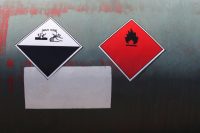Safer Chemical Management: Can OSHA Regulate Exposures Without PELs?
The Occupational Safety and Health Administration (OSHA) has published permissible exposure limits (PELs) for about 500 chemicals—and most of those PELs have not been updated since 1971. In the intervening four 4 decades, the number of chemicals used in the United States has exploded and, according to the Environmental Protection Agency’s (EPA) Toxic Substances Control […]










